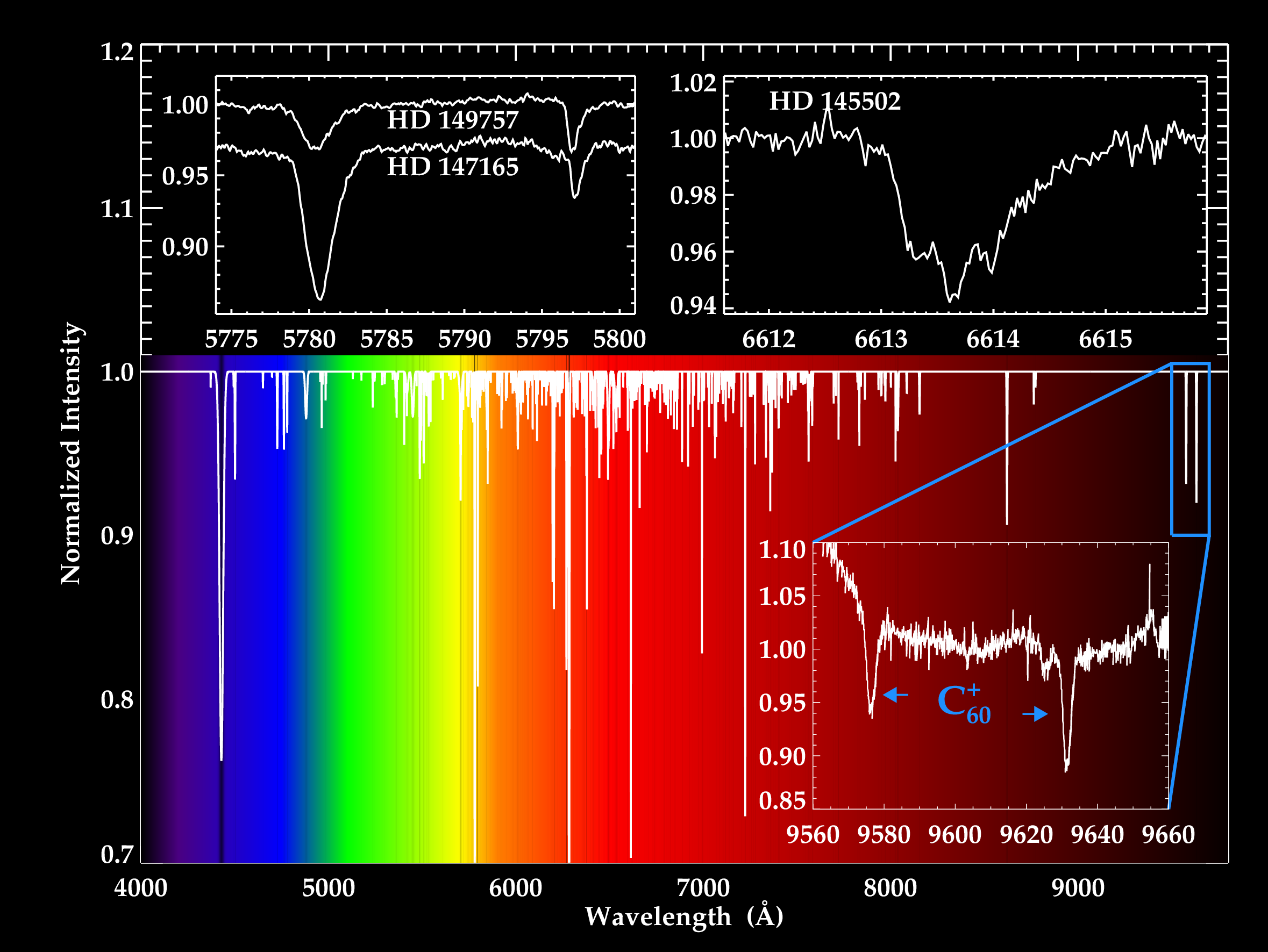The Diffuse Interstellar Bands

The Diffuse Interstellar Bands (DIBs for short) is the common name for a set of hundreds of absorption lines (each of the white lines in the figure above is a DIB!) that are detected from the near-UV to the near-IR in the spectra of stars that have interstellar material in front of them. The first of these bands (at 5780Å and 5797 Å - the two DIBs shown in more detail in the upper left inset) were detected as early as 1922, and the latest survey shows that to date, we know of almost 600 such DIBs. While we know that the DIBs are due to molecules in interstellar clouds, we have not been able to identify the precise molecules that cause the DIBs - with one notable exception. This makes the DIBs the longest standing problem in astronomical spectroscopy.
The one notable exception is that in 2015 (and the years after), it
was convincingly demonstrated hat 2 strong and 3 weaker DIBs in the
near-IR are due to electronic transitions of
C60
For the DIBs that remain unidentified, we do know that they are of interstellar origin, that whatever is causing the bands must be widespread in our galaxy and beyond, must be very stable to withstand the harsh conditions of the interstellar medium and are most likely large carbonaceous free molecules. Candidate carrier molecules include carbon chains, Polycyclic Aromatic Hydrocarbons (PAHs) and fullerene-type compounds.
A final identification of the DIBs will require a match with laboratory data. The problem is that the above mentioned classes of molecules still contain large numbers of molecules, which each have their unique spectrum. For instance, there are about 1.2 million different PAH molecules with less than 100 carbon atoms. Measuring all these molecules in the laboratory would take a lot of time, money and energy. By carefully studying the DIBs however, astronomers can determine some of the molecular properties of the DIB carriers, and this then eliminates many molecules as potential carriers.
I am the acting Principal Investigator of the ESO Diffuse Interstellar Bands Large Exploration Survey (EDIBLES). EDIBLES has obtained high-quality spectra of 123 DIB targets that allow us to study the DIBS and their environment in unprecedented detail. With an international team of about 35 researchers in 11 countries, we are now systematically analyzing these observations, and applying new statistical, physical and mahine-learning tools to learn more about these mysterious molecules. You can learn more about EDIBLES and see some of our first results in this paper


